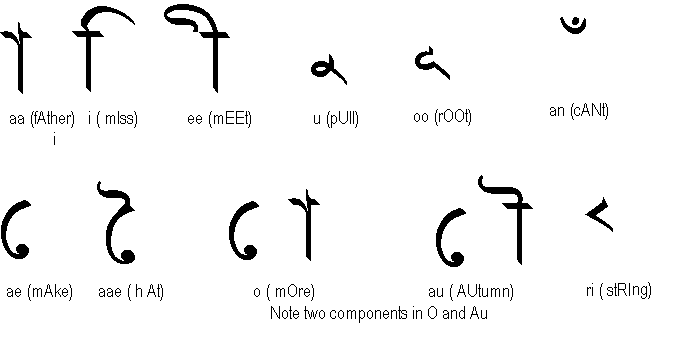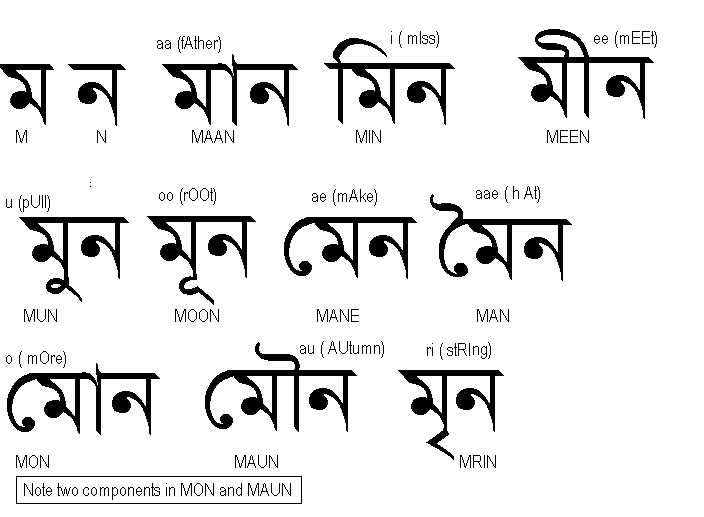It is hard to get vowel sounds right in any foreign language . Please read these very helpful comments by Rashid Ullah before proceeding Congratulations on a fine site. There are, I must point out, some flaws that can easily be corrected.
I find that Mr. Sameer Khan's corrections, though tacked on at the bottom, have not been implemented into the main lessons. The most grievous errors occur with the treatment of vowels and the consistent use of Hindi vowel sounds for the last four vowels, which you people label AE, AAE, O, and AU. Mr. Sameer Khan correctly insists that two of these vowels do not resemble the Hindi analogs, but in the lessons, the incorrect explanations are maintained, and worse, English words are given "transliterated" in Bengali script, but done wrong, thus misleading students more.
The vowels labeled AE, AAE, O, and AU should first and foremost be re-labelled as E, OI, O, and OU, respectively. E and O sound like their Hindi counterparts, but OI is the sound of O followed by I (a diphthong, and one absent in English) and OU is the sound of O followed by U (another diphthong, much like American English "coat").
When, during the third lesson, you transcribe the English word "at" into what is supposed to be the Bengali alphabet, you want the students to look at the Bengali and sound the word "at" because you've taught them the sound is AAE as in "hat." But, in fact, a native Bengali speaker looking at example H shall read "oit" not "at." And example J is thus also flawed, because what in Hindi is the AW sound is in Bengali an OU sound (like American English "coat"). So example J does not sound like "on" but like the American English pronunciation of "own."
So much for those four final vowels. Another point, and I don't believe Mr. Khan explains this: there is really no difference in pronunciation between the short and long vowels. What you label I and EE are both pronounced the same, in a sound somewhat like EE in "meet" but shorter. What you label U and OO are both pronounced the same, somewhat like OO in "fool" but shorter. Depending on the speaker and the dialect, these sounds can be a little less extreme, being somewhere between U and OO or somewhere between I and EE. But my point is: the distinction between short and long has been lost in Bengali, and speakers make no distinction unless they consciously try to force the spelling back on to the pronunciation, which yields an artificial sound.
I hope these corrections are implemented not only as an addendum tacked on at the end, but are followed through with, thus changing all the flawed lessons and exercises.
Dhanyavaad (dhonnobaad),
Rashad Ullah
I take note of all your criticism and really do welcome them , as we welcome all criticisms which help the site to become more useful . As far as vowels are concerned it is hard to please everyone as all speak in different accents , for eg. an English would object to someone teaching English with an American accent on the vowels and vice versa ! .
The aim of these lessons is really for students to get familiar with the script and then go on to books like the Balaji 'Learn Bengali' . What I need is more help with is to complete the lessons by somebody sending me the answers to the hybrid alphabet letters left unfinished in the other lessons .





